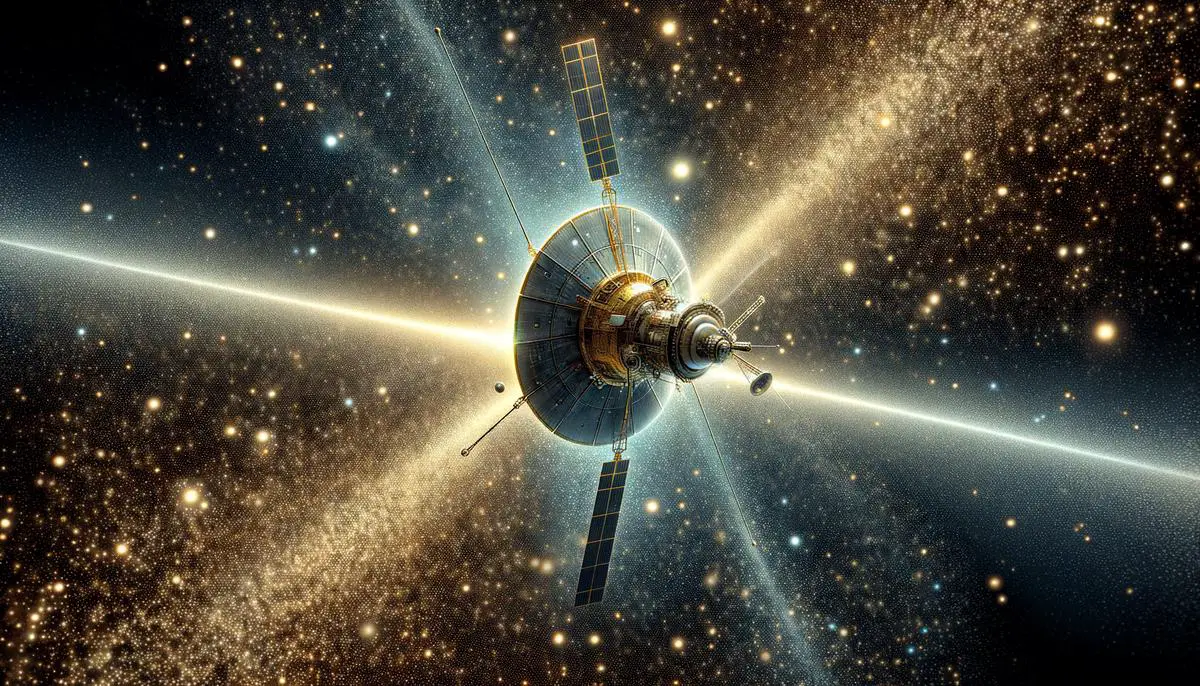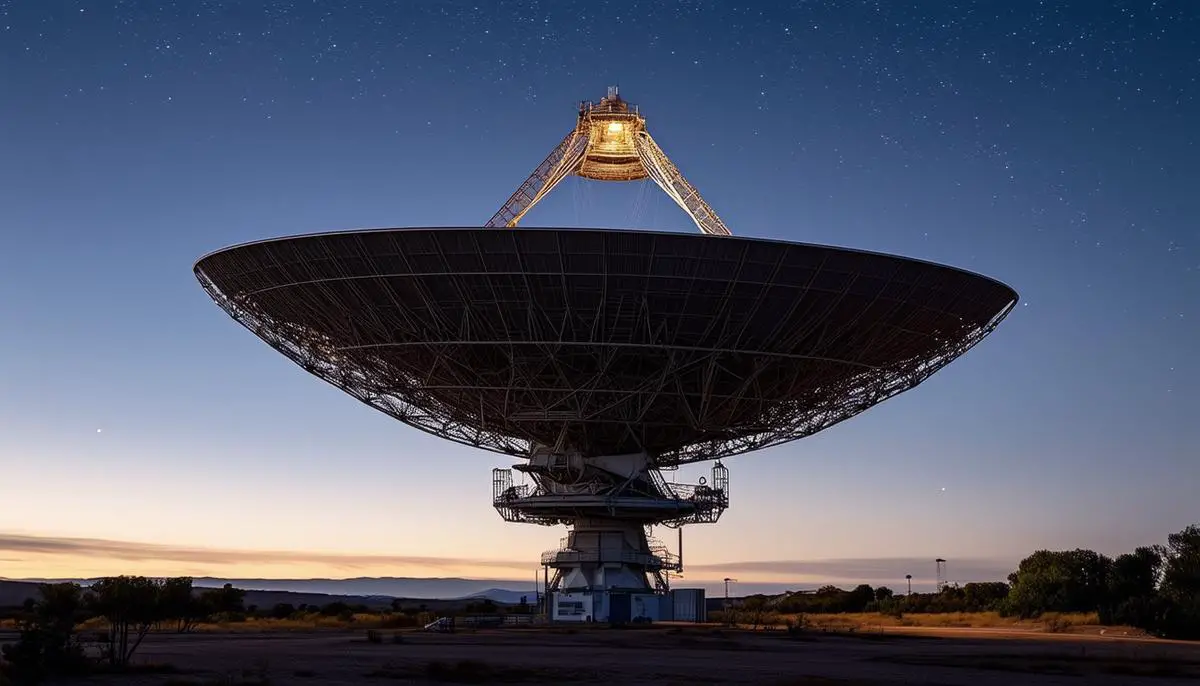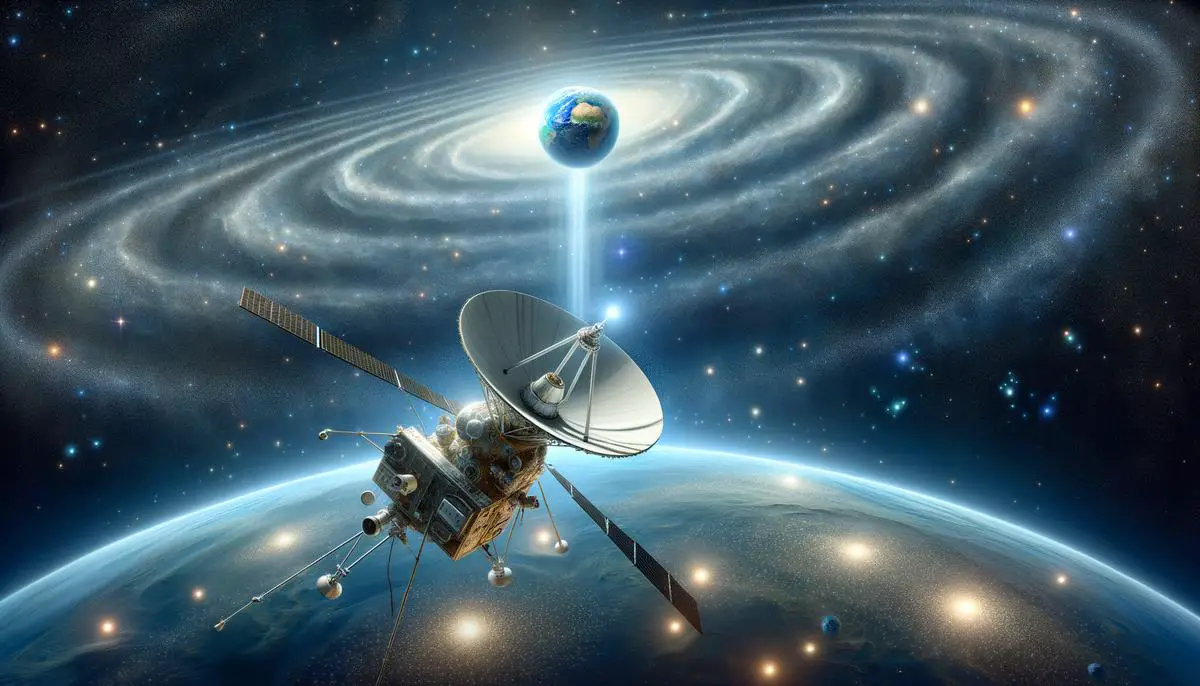Voyager 1: Exploring the Outer Reaches
Launched in 1977, Voyager 1 has revealed mysteries of our outer Solar System. Its mission expanded from studying Jupiter and Saturn to exploring interstellar space. In 2012, it became the first human-made object to leave the solar system.
In November 2023, Voyager 1 began transmitting a continuous but garbled signal to Earth. NASA engineers traced this issue to the Flight Data Subsystem (FDS), which organizes and packages data for transmission.
The Voyager team sent a poke command on March 1, 2023, prompting the FDS to try different sequences. By March 3, they detected unusual activity. An engineer from NASA's Deep Space Network decoded this signal, revealing an entire readout of the FDS memory.
Given Voyager 1's distance of about 24 billion kilometers, communication takes over 22 hours each way. After decoding the data dump on March 7, engineers are comparing it with information from before the communication problems began, aiming to identify and isolate the errors causing the garbled transmissions.

NASA's Approach to Identifying the Communication Problem
The 'poke' command sent on March 1, 2023, was an attempt to circumvent potentially corrupted sections of the FDS software. This command instructed the subsystem to alter its operating sequences, providing engineers with new angles to pinpoint the root cause.
The breakthrough came when a Deep Space Network engineer decoded the unusual signal, revealing a readable memory dump of the entire FDS. This dump includes vital performance instructions and code values, offering a snapshot of the FDS's current state for comparison with previous data.
The colossal distance between Voyager 1 and Earth introduces significant challenges, with each command taking over 22 hours to reach the spacecraft and an additional 22 hours for Earth to receive any response.
"Every byte of information is crucial. Any anomaly we find could be the key to fixing the garbled communications."
Working with data sent back on March 7, NASA engineers began dissecting the memory dump. They are carefully evaluating every aspect, given the importance of each byte of information. Any anomaly found could be the key to fixing the garbled communications.
Despite the hurdles, the engineering team remains optimistic. NASA's history of overcoming seemingly insurmountable obstacles fuels this confidence. Each piece of decoded data carries hope that Voyager 1 will soon resume its vital transmissions.

Next Steps for Restoring Voyager 1's Communications
The NASA engineering team is now focused on analyzing the memory dump received from the FDS. They are comparing the newly decoded data with transmissions from before the communications issue began, aiming to identify discrepancies and locate points where the code may have been corrupted or altered.
Engineers will examine each segment of the FDS memory, looking for anomalies in the performance instructions and code values. This careful comparison is crucial for understanding the sudden shift to meaningless binary data.
The timeline for implementing a fix is extended due to Voyager 1's distance from Earth. Each step in the troubleshooting process is subject to a nearly two-day communication delay. Despite these challenges, the engineering team remains optimistic, bolstered by NASA's track record of overcoming similar technical issues.
The focus is on:
- Isolating errors within the software sequences
- Identifying malfunctioning components that could be bypassed or corrected
- Restoring Voyager 1's ability to send coherent data
Ongoing efforts include exploring alternative strategies for a more resilient solution, safeguarding against future anomalies. This comprehensive approach underscores the importance of Voyager 1's mission and NASA's commitment to maintaining its operability.
In the coming weeks and months, NASA will provide updates on the progress of these efforts. Each step taken brings the mission closer to restoring full communication capabilities, allowing Voyager 1 to once again transmit its discoveries from the edges of our solar system and beyond.

- Jet Propulsion Laboratory. Voyager 1 – Mission Overview. NASA.
- Stone EC, Cummings AC, McDonald FB, et al. Voyager 1 Explores the Termination Shock Region and the Heliosheath Beyond. Science. 2005;309(5743):2017-2020.
- Ocker SK, Cordes JM, Chatterjee S, et al. Persistent plasma waves in interstellar space detected by Voyager 1. Nat Astron. 2021;5:761-765.
![]()
